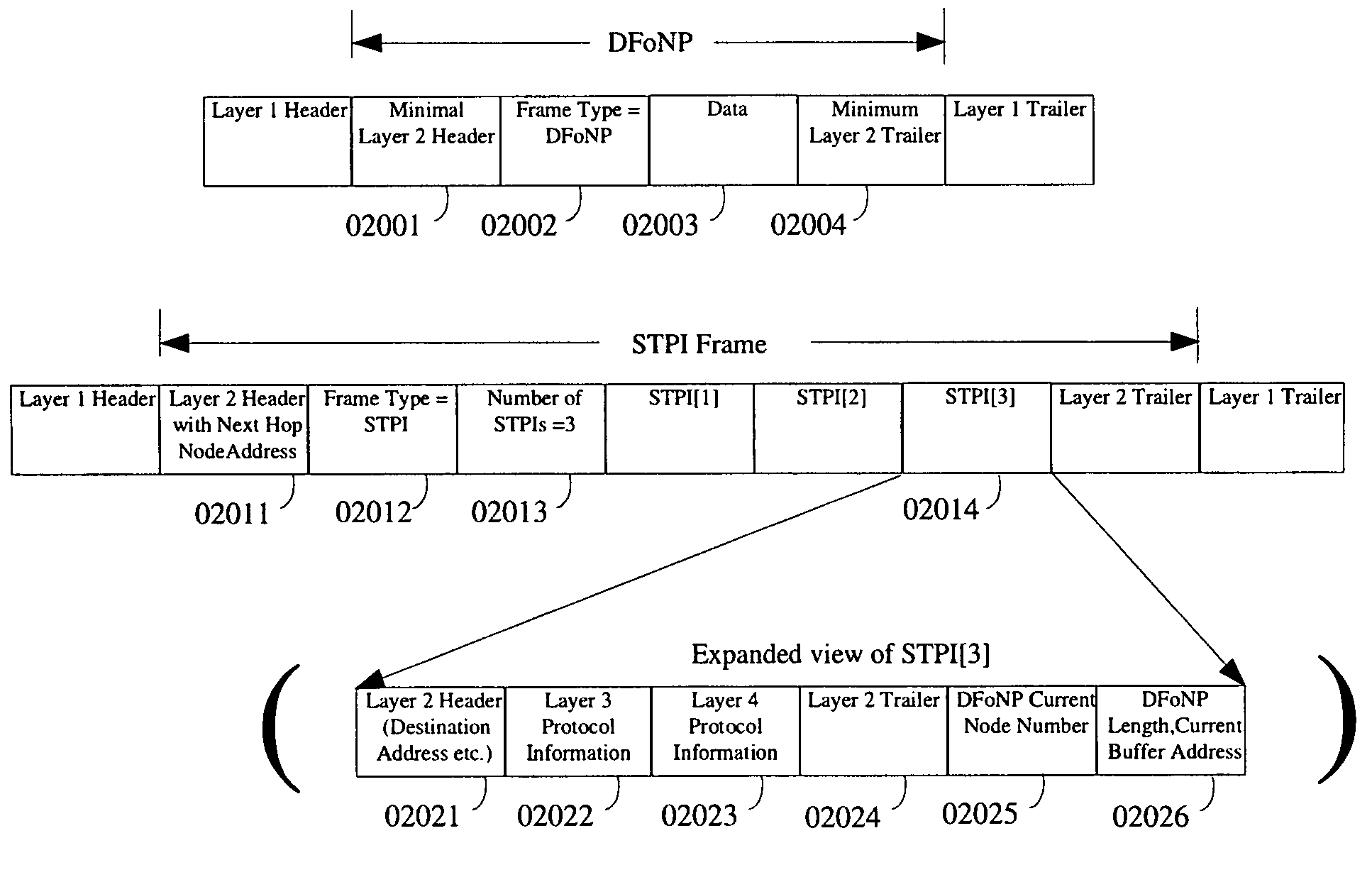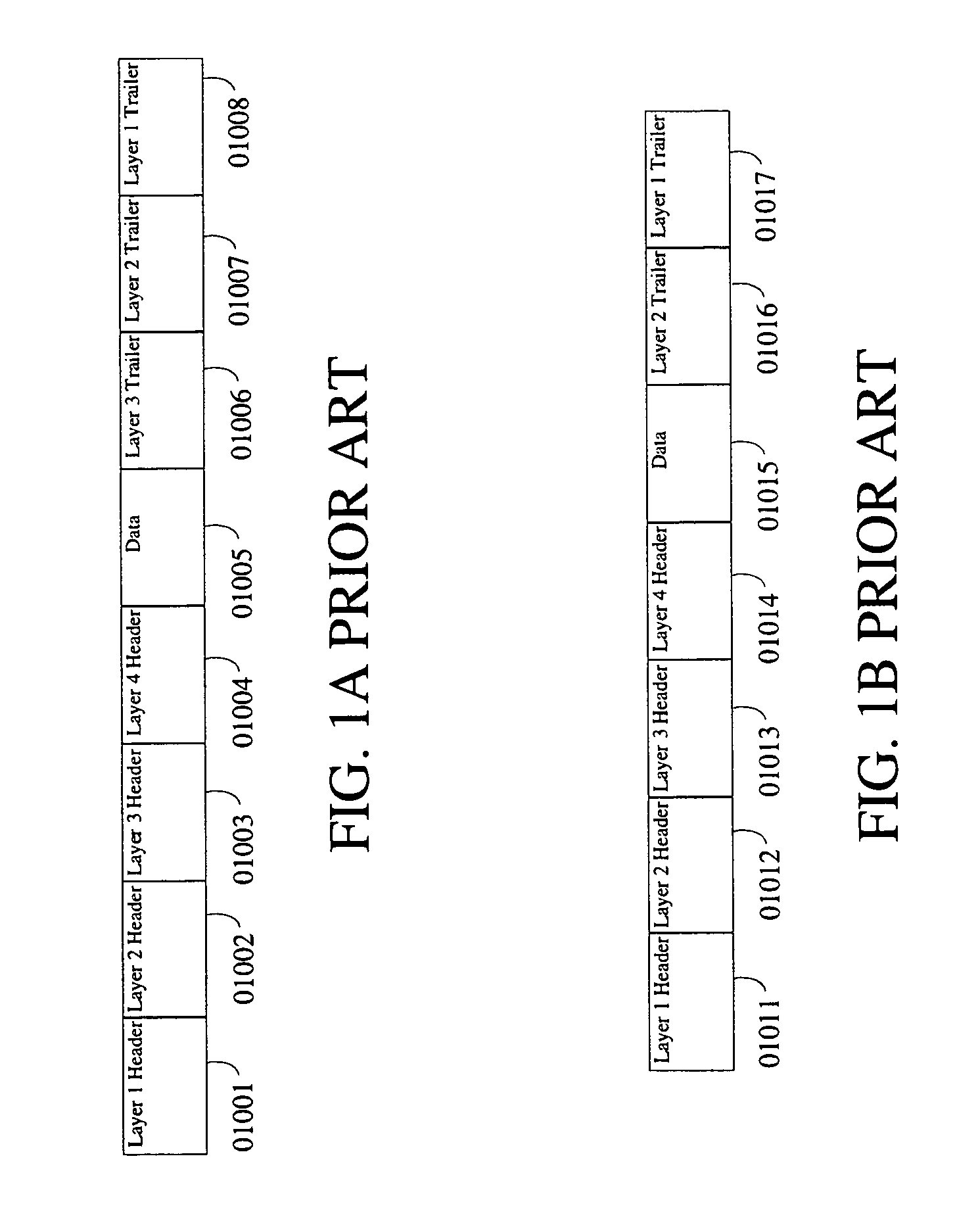Creation and transmission of part of protocol information corresponding to network packets or datalink frames separately
a technology of protocol information and datalink frame, applied in the direction of digital transmission, data switching network, instruments, etc., can solve the problems of network slowdown, overhead and logic for separating the data portion and the header portion, and the loss of packets of switches, so as to reduce or avoid network congestion
- Summary
- Abstract
- Description
- Claims
- Application Information
AI Technical Summary
Benefits of technology
Problems solved by technology
Method used
Image
Examples
Embodiment Construction
[0057]There are a very large number of design options with network component designers with respect to the format of DFoNP, STPI and STPI frame / packet. FIG. 2 illustrates some examples of different formats in which the STPI and the corresponding DFoNP can be created adhering to this invention. The layer 2, layer 3, and layer 4 information that may be present in the DFoNP and STPI may or may not be mutually exclusive and is dependent on specific format or formats of STPI and DFoNP supported by switches and endnodes. Each network will employ only few STPI / DFoNP formats (preferably, as few as 1-3), one each for a subtype of a packet or a frame. Preferably, a network may employ only one format for STPI and one format for DFoNP to reduce complexity in switches and endnodes. STPI should have enough information for the switch to find the port for the next hop.[0058]i) FIG. 2A illustrates example formats for DFoNP, the corresponding STPI and an STPI frame which contain STPIs. All layer 2 02...
PUM
 Login to View More
Login to View More Abstract
Description
Claims
Application Information
 Login to View More
Login to View More - R&D
- Intellectual Property
- Life Sciences
- Materials
- Tech Scout
- Unparalleled Data Quality
- Higher Quality Content
- 60% Fewer Hallucinations
Browse by: Latest US Patents, China's latest patents, Technical Efficacy Thesaurus, Application Domain, Technology Topic, Popular Technical Reports.
© 2025 PatSnap. All rights reserved.Legal|Privacy policy|Modern Slavery Act Transparency Statement|Sitemap|About US| Contact US: help@patsnap.com



